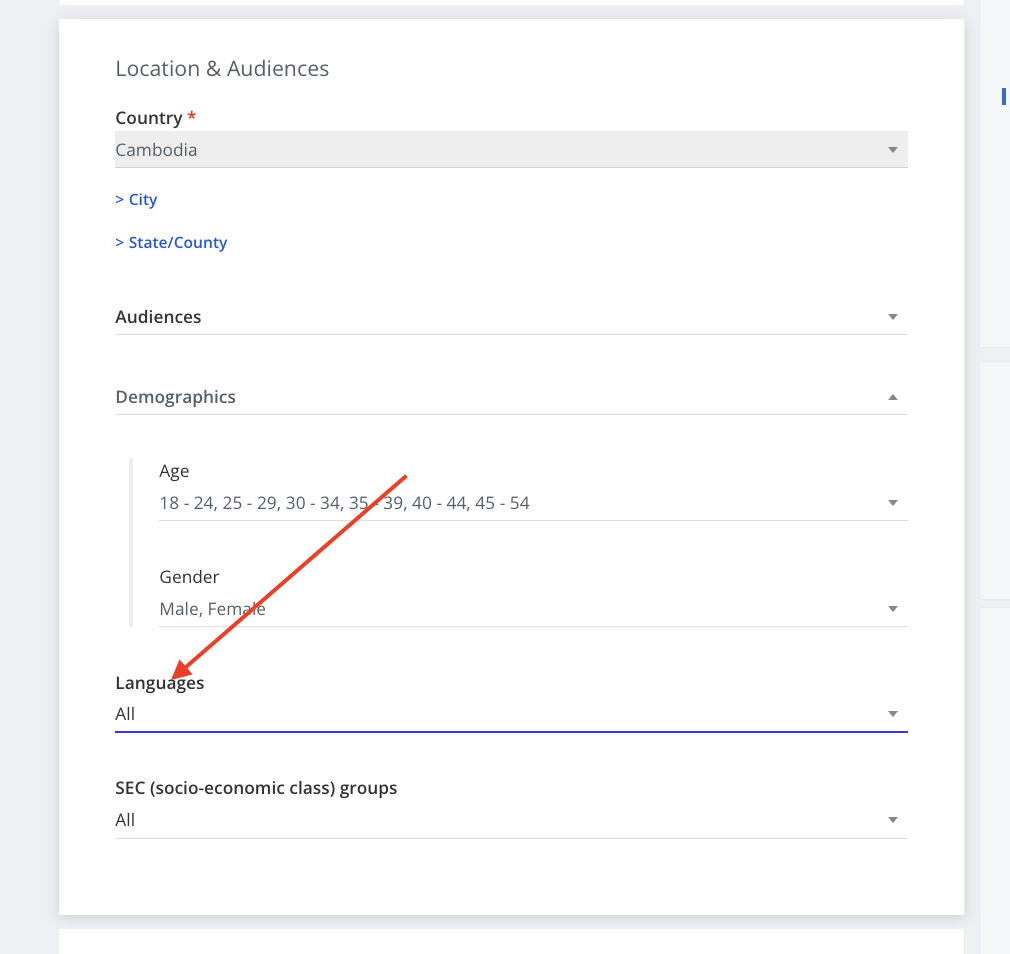Language targeting
Introduction
Eskimi DSP's language targeting feature enables precise audience reach based on preferred languages. Advertisers can tailor their ads to specific linguistic groups, enhancing relevancy and engagement. With language targeting on Eskimi DSP, campaigns can be optimised for better results and improved ad performance. This article explores the technical implications how language targeting works and why advertisers should use it.
How language targeting works?
Language targeting is based on the publisher's (site & app) content. When the campaign targets a specific language or language groups Eskimi DSP will search for ad opportunities that include app.content.language or site.content.language signal with a concrete language selected in the campaign.
The content in this case is determined by the publisher. Eskimi doesn't do additional monitoring to validate that the language of the content is actually true. If the above mentioned signals are not found the ad opportunity will fall under the unknown language targeting.
Keep in mind that the language targeting available on Eskimi DSP is not related with the device language. This is a different language type under openRTB protocol. Eskimi DSP doesn't support device language targeting.
Where language targeting can be found?
Language targeting is available for any advertising using Eskimi DSP. The targeting can be located in the campaign setup, under Location & Audiences section. There are 185 languages that advertisers can use throughout their advertising.
Why to use location targeting?
There are many reasons why advertisers should use language targeting. Here are some points to consider for any advertiser:
- Enhances relevance by delivering messages in the preferred language of the target audience, increasing engagement and conversion rates.
- Enables advertisers to reach a global audience, expanding market reach and capitalising on international business opportunities.
- Demonstrates cultural sensitivity by adapting content to the local language, fostering a deeper connection with potential customers.
- Increases engagement rates by presenting content in users' native language, resulting in higher click-through rates and interactions with ads.
- Improves ROI by reaching the right audience in their preferred language, optimising advertising spend and increasing conversion rates.
Limitations
Language targeting allows advertisers to reach relevant audience. However, there are key points to consider when using language targeting:
- The amount of ad opportunities will decrease. Advertisers will not have the same amount of ad opportunities when applying language targeting.
- The reduced amount of ad opportunities will result in higher CPM.
- Some of the languages may have small ad opportunities so it is essential to check how the targeting impacts business KPIs, spends and other important metrics.

